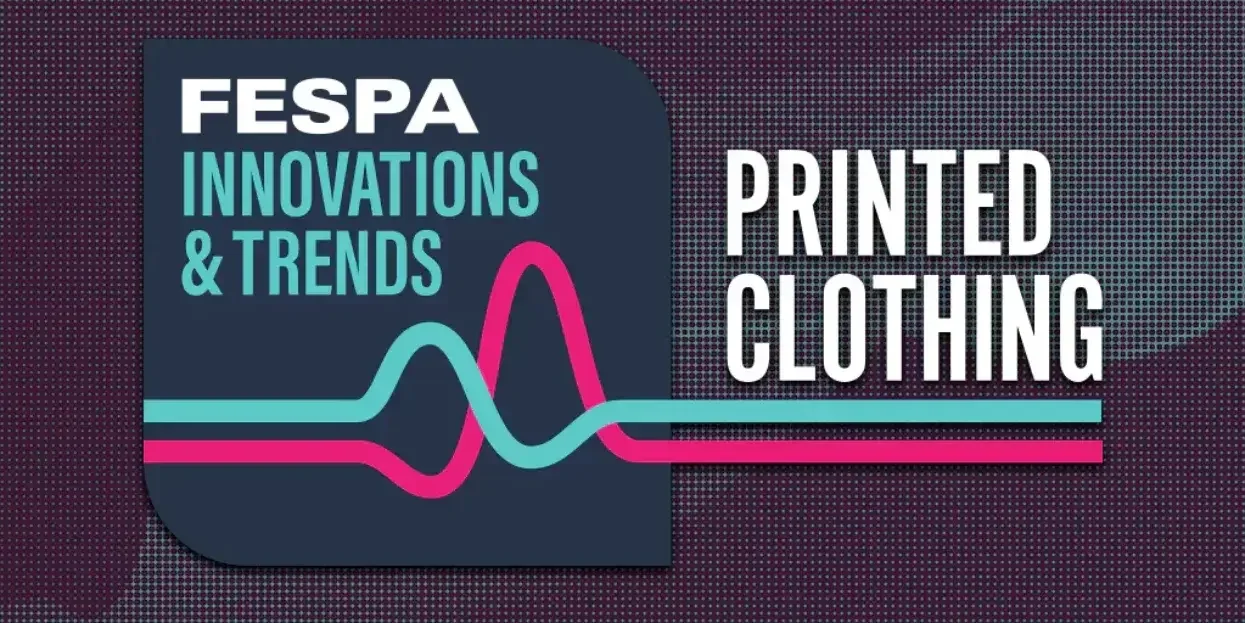
In our recent FESPA Innovations & Trends (FIT) virtual event we brought together four garment experts from across the world to discuss the latest trends, challenges and opportunities in on-demand production and customisation of fashion and sportswear.
The host: Debbie McKeegan, FESPA’s Textile Ambassador and CEO of Texintel has spent her entire career in the textile industry working with both analogue and digital production.
The experts: Alex Marsal, Global Sales Director at Liberty Fabrics, part of the Liberty Group. The division has offices around the world, 20 designers based in central London, and a manufacturing facility in Como, Italy.
Kevin Van Lancker, CEO at Sportswear of Tomorrow. As a former inline speed skater who represented Belgium, Kevin saw the difficulty clubs and federations had getting apparel from mainstream suppliers and started a clothing brand to source apparel from factories directly. Sportswear of Tomorrow is based in Romania and supplies over 300 brands worldwide.
J. Kirby Best, Chairman of iCreate.Fashion, a new, comprehensive platform where brands develop, store and deliver their designs to manufacturing and retail. The platform integrates the most advanced design software with on-demand manufacturing right through to online retail.
Roberto Lucini, CEO of Creazioni Digitali, SRL, a digital textile printer located in Como, Italy, that works on commissions. The company specialises in sustainable digital printing with pigment inks, a process that is branded as GreenDrops.
How big a problem is sewing and finding staff with the correct skillsets for you in your area?
Kevin: Because of the pandemic and the growth demands on manufacturing here, I think it’s a challenge. We first had a factory in Latvia for ten years, but I moved away because it became a challenge to find sewers. But it’s not only sewing. We also need people to work on the digital files and so on, so finding staff for any business, not only for ours, is difficult.
I don’t know what the future is going to look like. I know that some brands are spreading their manufacturing over all of Eastern Europe, and also exploring countries they wouldn’t have worked in before, like Albania or Macedonia. I don’t work with these countries because I’m not familiar with them. I prefer it to be based in Romania where you don’t have any import duties etc if you ship from here to Europe.
With regards to labour, we will see where things go. At this moment, we’re not complaining. We have the staff right now for the demand that we have.
Debbie: Do you have in-house training as well, Kevin?
Kevin: When people come on board, yes, we have an engineer who teaches them how to sew certain products, because most of the sportswear products we produce for the A-level brands aren’t so easy. They may look easy, but they have lots of detail that people need to pay attention to. For years, brands have had production in Asia, and the quality is really nice. So we have to attain the same quality here in Europe without being expensive because that last part is also very important.
Kirby: We have a lot of trouble hiring great staff in Alabama. We have moved out to Phoenix, Arizona, and there is a very large Hispanic base here, and they’re very well-trained sewers. There’s a story we love to tell, about a friend out here, Arizona Fashion Source, and she hired 70 sewers, of which 70 people were perfect. We hired ten sewers at the same time and we had to let nine go.
So there are pockets in the United States and you can hire some fabulous sewers, but there are others that we have a lot of trouble with. Yes, it’s a big issue and yes, we are with BMC, we’re investing in one trainer for every 33 people and a full-time trainer to train the trainers. So yes, it’s a big issue.
Alex: From an outsiders view, I agree with what Kevin was saying. At the end of the day, you do see that there’s a culture that brings the skills to different countries. You see it around the world that some countries are winning and some are losing the power of manufacturing and sewing.
Debbie: Kirby, how do you think robotics are going to help, and how far away do you think we are from robotic manufacturing?
Kirby: Let me break that down into two categories. The actual sewing robotics, I think they’re a long way off. We were watching with great excitement what some people are doing, and we watched the SewBot group, where they were moving the sewing machine around the product. I think that kind of thinking is going to be very exciting. However, I don’t know whether we’re going to see anything in my generation that is successful in sewing a complete garment unless it’s knitting — those machines are doing incredibly well.
But as for everything else in the plant, robotics will take over. If you watch the video of our new plant, everything’s moved by robotics, everything’s organised by software, every piece that moves is driven by software and automation.
You can see the whole conversation here, and for more information on the second day of the FESPA Innovations and Trends Printed Clothing event, visit here.
Discover the latest innovations in garment printing at the Global Print Expo 2021, Europe’s leading exhibition for screen and digital wide format print, textile printing and signage. Discover the latest products, network with like-minded individuals and explore new business opportunites. Register now and use promo code FESH101 to receive a discount of 30 euros.